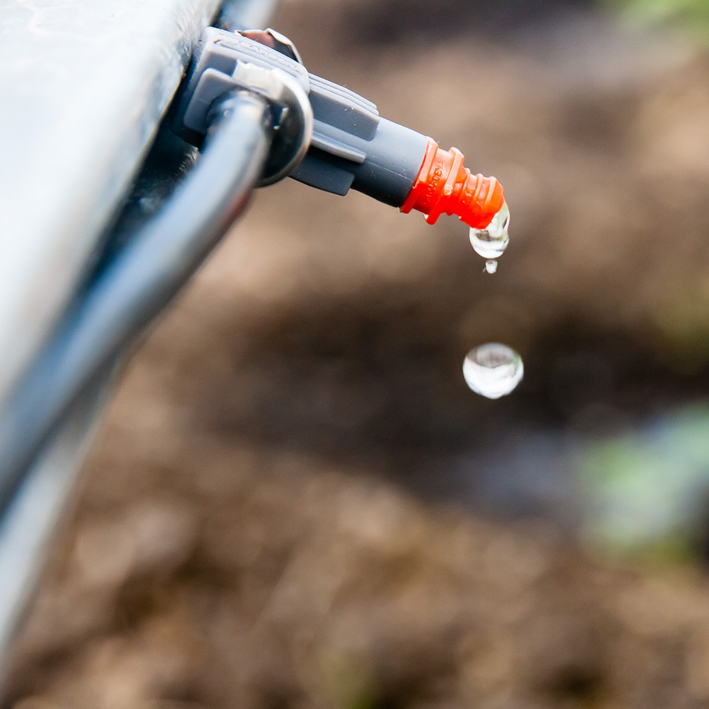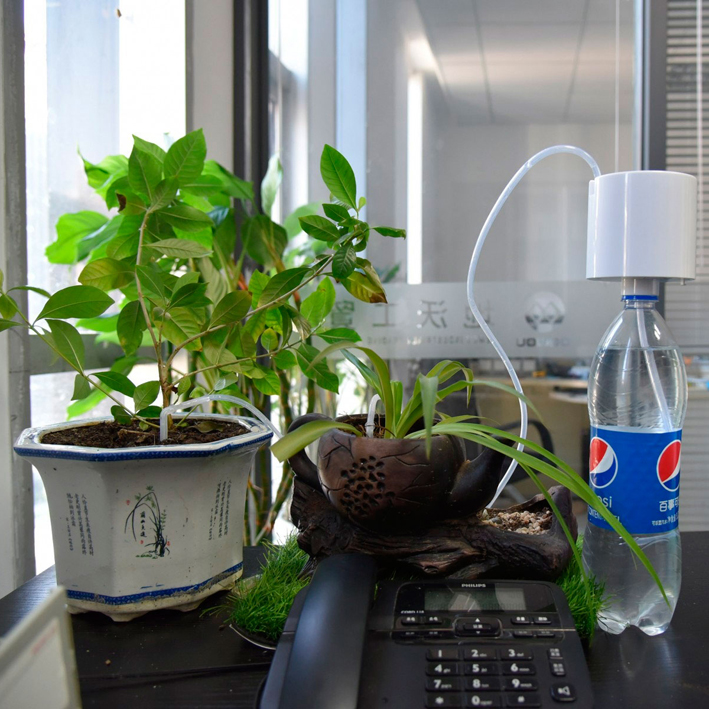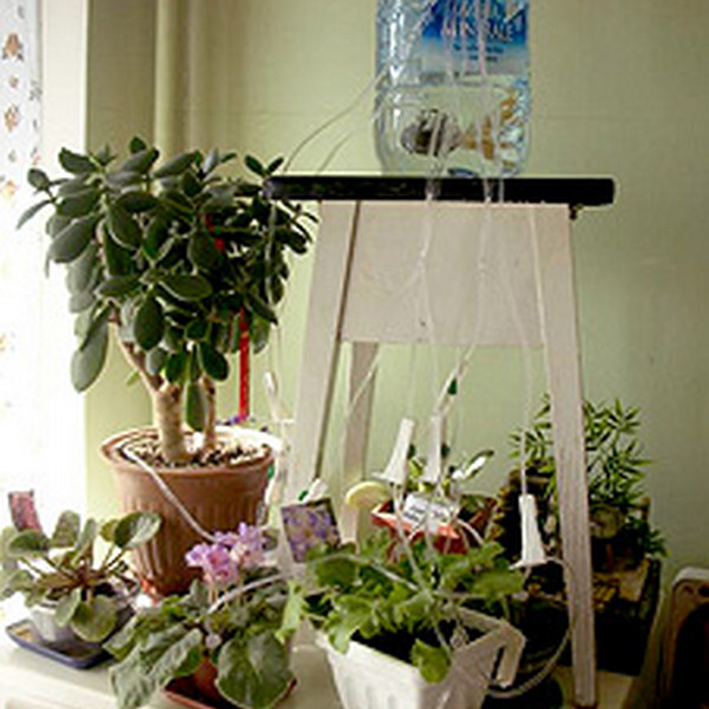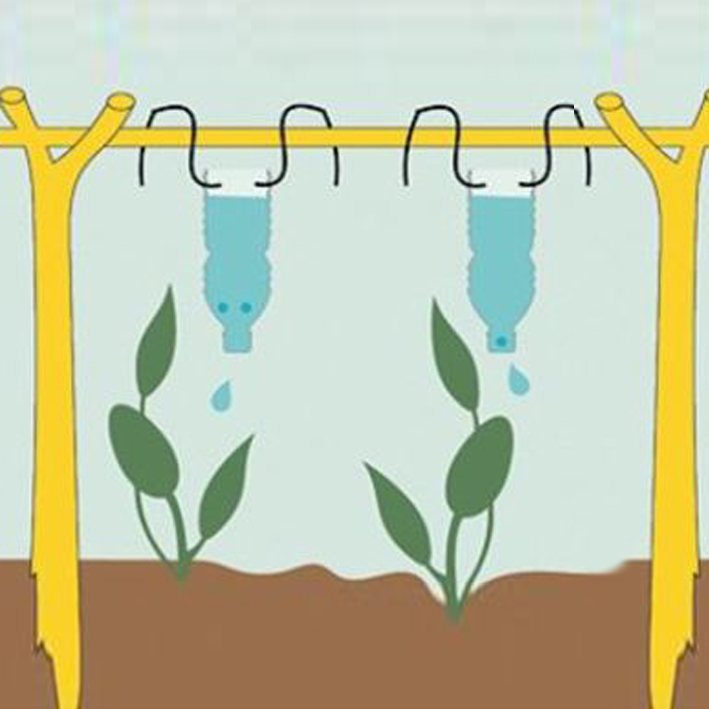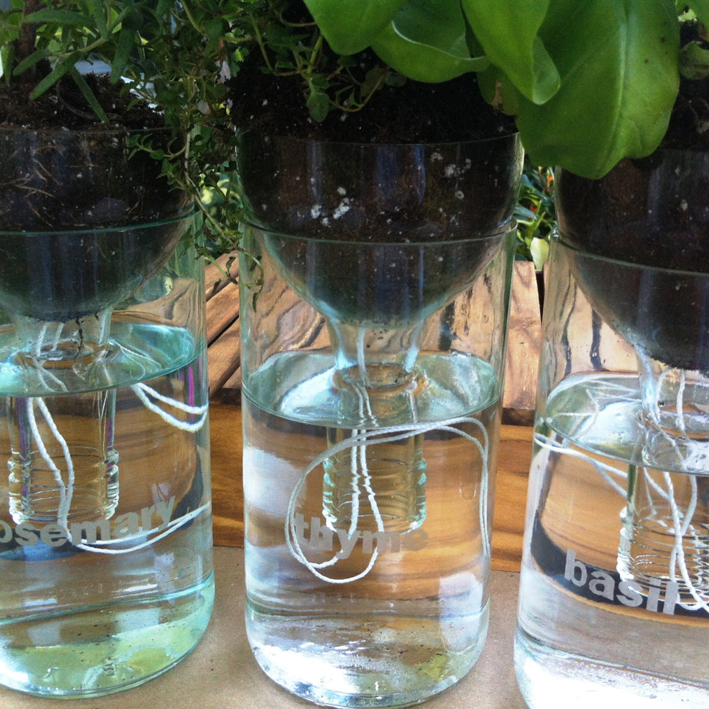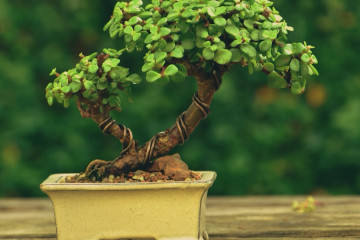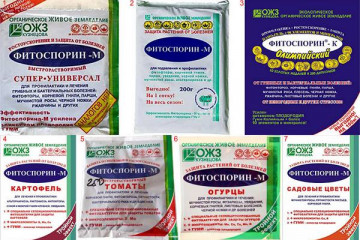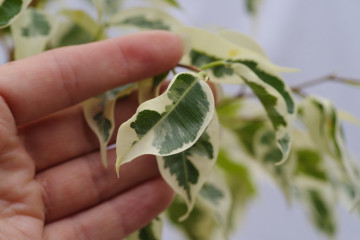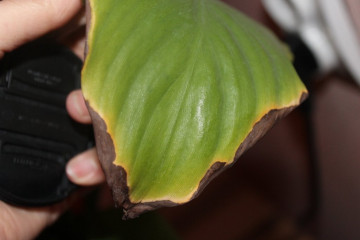DIY drip irrigation for indoor plants
Content:
Florists and plant lovers, going on vacation, do not have to worry about their favorites. They have an autowatering system at their disposal. It is designed to moisturize plants for a long time without human intervention. You can buy it in the store or do it yourself.
Drip irrigation for indoor plants
Such a system greatly simplifies the care and cultivation of indoor plants. By adjusting the drip water supply, more than 15 flowers can be watered at the same time. All nutrients penetrate into the soil in the required proportions.
Pros:
- simultaneous irrigation of several plants;
- no need to connect to the water supply;
- regulation of the amount of liquid for each plant;
- economic water consumption;
- targeted irrigation of specific areas and pots;
- autonomous irrigation on a schedule;
- only roots (not leaves) are moistened.
Before installing, you need to prepare the plant:
- stop feeding with fertilizers in 3 weeks;
- to clear the trunk of buds and flowers;
- reduce direct sunlight.
How is drip irrigation for home potted flowers
Drip irrigation for indoor plants is used when it is not possible to water the plants daily.
Previously, it was used as an additional form of hydration. For the best effect, the system should be checked for a long time. Only then use such watering as the main one.
Auto-drip irrigation is the soaking of the soil in small portions (drops). The bottom line is to pull the liquid out by the roots. The root system consumes as much fluid as it needs.
Such a system is popularly called an automatic pot. It contains 2 vessels, which are separated from each other by a barrier. One has water, the other has a plant. The liquid seeps into the soil as needed and is evenly distributed in it. Flowers in such pots are not susceptible to drying out.
Several types of soil moistening are known:
- Top is the standard top-down irrigation view.
- Subsurface - using droppers, flasks, funnels, etc.
- Root fluid intake occurs from the bottom up.
The need to use a watering system for indoor plants
Watering is the most important procedure for the nutrition and growth of all plants on earth. Water carries all the substances and minerals necessary for life. Photosynthesis and metabolism are directly dependent on it.
Excessive moisture in the soil can lead to root rot, disease and death. The needs of all plants are different. It depends on the climatic conditions and the homeland of the green pets. When using an automatic watering system for indoor plants, do not worry about the wrong dosage. The plant itself will tell you how much liquid it needs.
Minerals and fertilizers can be poured into the root zone along with water.They are thoroughly dissolved so as not to cause clogging of the irrigation system. Fertilizers are introduced according to the instructions for the required number of days.
Houseplants require constant care. Timely watering is in the first place in importance.
How to make do-it-yourself drip irrigation
To make drip irrigation for indoor plants with your own hands you will need:
- The filling vessel is made of plastic.
- The water for use is clean.
- Tubes and hoses are cleaned weekly.
- After the first installation, the system is completely flushed.
- In the case of feeding the plant with fertilizers, tubes and flasks should be cleaned from residues and impurities.
There are several ways to make do-it-yourself drip irrigation:
- With the help of droppers.
- Ceramic cones.
- Plastic bottles.
Each of the options is convenient and easy to use in its own way.
How to make drip irrigation from medical droppers
Drip irrigation is best made from a medical dropper. The system has a fluid regulator. With it, you can control the level of water supply to the pot.
To install, you need to do the following:
- The vessel is filled and suspended above the level of the pot (preferably using a plastic bottle).
- The tip of the system is connected to the vessel, and the lower part is lowered into the pot of earth.
- The control wheel switches to the water supply state.
For several days, it is necessary to monitor the level and rate of water supply to the pot. After installation for a while, you can not worry about the plant.
Ceramic cones
Ceramic cones are another drip system designed for watering home flowers. The set includes a ceramic cone, a vessel and plastic tubes. The narrow part sinks into the ground. Water is poured into the other part. Thus, the liquid must drain into the ground under pressure. The feed needs no control.
The only rule is to install the tank at the correct height. With a high suspension, the liquid will come in slowly and poorly moisten the soil. At low, it threatens with an excess of moisture.
Plastic bottle
The most common and budgetary way. For manufacturing, you will need 1 plastic bottle for 1 pot and a minimum of physical effort:
- Make several holes with an awl on the lid.
- Bury the bottle in the ground with the neck down.
- Cut off the bottom and pour water into the bottle.
The roots are hydrated and do not need much maintenance.
There is another option with a plastic bottle. The plastic container is suspended from the lower part with the neck down. It is attached to a wire to a wooden rail. In this position, the eggplant is stable and easier to refill.
Ready systems
Complete system with hoses, tubes, etc. delivers water from the main source to all connected plants. Its dimensions can be changed depending on the need. Schematically, it can be represented as follows:
- A-source (tap).
- B-conductor (hose, tube).
- C-end point (nozzle, funnel).
A regulator is used for connection. He controls the feed. Irrigation of the soil takes place in a timely manner.
There are 3 types of connection:
- Remote.
- Direct.
- Using a connector.
In specialized stores there are ready-made automatic irrigation systems, for example, Hozelock. They can be used in growing both indoor plants in pots (2 pcs.), And in garden plots with an area of 9 sq. M.
Automatic irrigation systems are very diverse.
Blumat
It is widely known among flower growers.
Advantages:
- automatic water supply at any time of the day;
- the equipment is easy to maintain;
- durability;
Disadvantages:
- frequent contamination of filters and tubes;
- frequent filling of the tank.
Root-fed planter
They are popularly called smart pots. Works on the principle of molecular motion. The system has a reservoir from which water itself flows into the root system.
Detailed description:
- The cache-pot consists of 2 vessels: 1 - the decorative cache-pot itself, 2 - a reservoir that is invisible and performs the function of root drainage.
- The roots, reaching for water, absorb the required amount.
- Filling takes place through a special hole.
- A sleeve is provided to remove excess fluid.
Organizing drip irrigation for your favorite indoor plants with your own hands is not so difficult. A flower lover can try to make a watering system on his own, or he can purchase all the necessary accessories in specialized stores.
